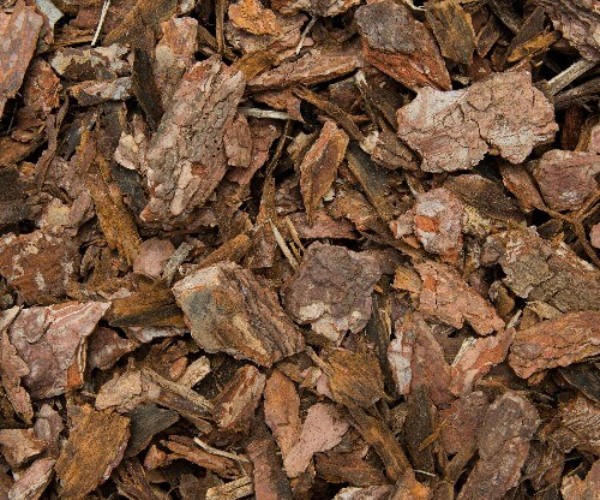- Lawn Turf
- Artificial
- Soil
- Timber
- Composite Decking
- Paving & Stone
Get In Touch With Our Experts Today!
Give us a Call! - Seed & Fertiliser
- Dressing
- Bark

May 22, 2023
Spring is in full swing right now, with fewer frosty mornings, cherry blossom emerging, bumblebees coming out to play and a chorus of chirps and cheeps with every sunrise. Unfortunately, weed growth is also kicking into gear. While there are many different solutions for controlling those pesky weeds, one of the most effective and visually appealing methods is to use bark mulch.
Bark mulch is made from tree bark, such as Cedar, pine, spruce, and hemlock. This type of mulch is commonly used in playgrounds, garden beds, borders, pathways and other planted areas to shade weed seeds and ensure they do not receive sunlight. At the same time, bark mulch regulates soil temperature all year round, keeping it cooler in summer and warmer in winter. In turn, landscapers and gardeners can ensure desirable plants receive the soil, water and nutrients required to thrive.
Bark mulch provides a physical barrier to weeds, making them unable to penetrate and grow. The thickness of the bark acts as a deterrent for weed seeds, which is why it’s vital to lay down a generous layer. Not only does bark mulch suppress weed growth, but it also retains moisture and adds valuable nutrients to your soil as it breaks down. Plus, it looks great! The natural character and warmth of the bark creates a beautiful backdrop for any garden or landscape.
Laying down bark might seem intuitive, but there are some clever tricks to ensure you get maximal benefit from your bark mulch. Start by removing all existing weeds, dead grass and debris from the area you want to cover. Once this is done, distribute a small layer of bark across the topsoil to cover everything and stop sunlight from filtering through. Just a couple of centimetres will suffice. Some like to leave a small gap around the plants to prevent the bark from smothering them and encourage healthy growth. Once done, water thoroughly! This will help hold the bark in place and discourage any more weeds from poking their way through.
The best time of year to apply bark mulch is mid-to-late spring or autumn when temperatures are milder and rainfall is more frequent. This allows the bark to settle properly into the topsoil, providing an effective barrier against weeds. Applying bark mulch during these times also ensures there will be enough moisture in the ground for it to break down over time. Laying down bark during peak summer months should be avoided because the heat can make it difficult for the bark to settle properly, and the soil may become too dry.
Bark tends to break down slowly, but with time, even the toughest of barks can start to lose their ability to block out weed growth, and eventually, those pesky weeds will find their way through. Replenishing the top layer of bark mulch every year or so is a good rule of thumb to keep your flower beds looking fresh and fabulous. This will help keep the weeds at bay and ensure your garden looks its best.
Now that you know why bark mulch is such an effective solution for controlling weed growth, it’s time to get out there and start laying it down! It is a great way to keep your garden free of unwanted weeds without using harsh chemicals or manual weeding every week.
You can spruce up your garden with ornamental bark from George Davies Turf. Not only will it look great, but its weed-suppressing and moisture-retention abilities make sure that no matter the season, your outdoor space remains healthy and weed-free all year round. And dont forget, George Davies Turf supplies the finest mulch on the market – click here to get your quote.
CALL US NOW ON 01234 818 253